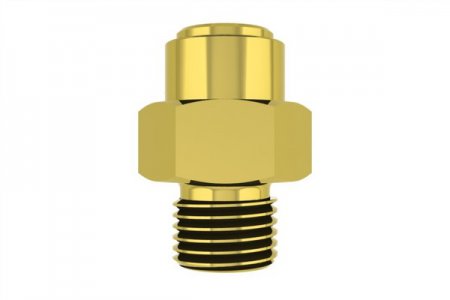This screw is about 1/4" long. I don't know the pitch, but it's about 50 TPI.
I understand the need for thread relief so the cuts don't have to end all at the exact same spot, but cutting by hand under a loupe made stopping at the "end" of the thread very easy. But cutting the thread relief before cutting the threads was not an option for me!
That's because I had absolutely no idea where the bottoms of the threads would end up, so I didn't know the final minimum diameter. I know the calculations are not difficult but I did all this work by eye! I knew I hit the correct thread depth when the flat areas disappeared from between the threads as I cut them deeper. But how deep? Didn't know, and more important, didn't really care. Since I can make my screws and holes all custom (non-interchangeable), what need have I of measurements?



